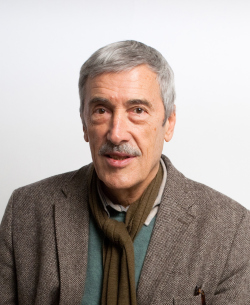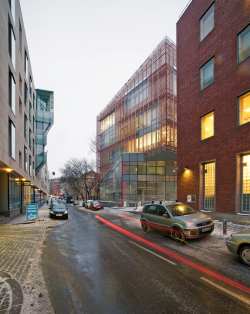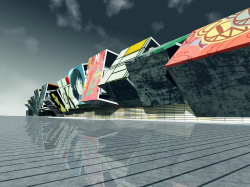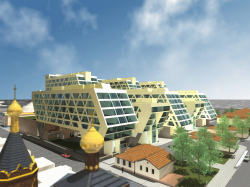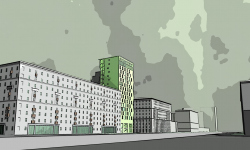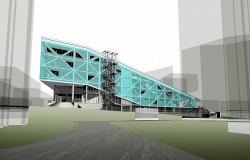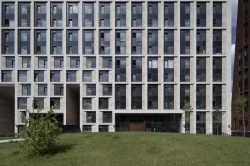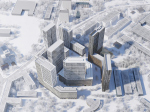Alexander Skokan
information:
-
country
Russia -
Firm’s Official Site
http://www.ostarch.ru
Born on the 4th of June 1943 in Moscow
Education:
1960–1966 architect degree, Moscow Institute of Architecture
1970-1973 Post-graduate courses in the Central Research Institute of the Theory and History of Architecture
Teaching:
1976-1982 Consulting lecturer of the Central Experimental Studio of the Union of Artists of Soviet Russia
1985-1989 lecturer of, Moscow Institute of Architecture, town-planning department
1993-2003 Thesis supervisor at Moscow Institute of Architecture
Professional experience:
1966-1969 Mosprojec-2, architect
1966-1973 Member of the experimental project group “NER”, architect
1972 Junior research associate in the Central Research Institute of the Theory and History of Architecture
1972 Member of Union of Architects of USSR
1973-1982 Leader of the group of architects of the Scientific Research and Design Institute of General Plan of Moscow
1982-1985 Chief of the R&D department of the Scientific Research and Design Institute of General Plan of Moscow
1985-1988 Integrated studio of monumental and ornamental arts of the union of artists of Russian Federation, architect
1989 to the present day – Leader of “Ostozhenka” architectural studio
Titles:
Corresponding member of the Academy of architecture and construction-related sciences
Member of the International Academy of Architecture (IAA)
Laureate of State Prize of Russia
Honored Builder of Moscow
Vice-president of Russian Union of Architects
Member of the board of directors of Moscow Architects Union
Buildings and Projects:
Office building in Butikovsky Side-street, 9
Russia, MoscowRetail centre in 39 mikroraiyon Lublino
Russia, Moscowcontest project "Info-City"
Russia, MoscowResidential complex, Krasnodar
Russia, KrasnodarResidential complex, Leninsky prospekt
Russia, MoscowResidential complex, prospekt Mira
Russia, MoscowResidential, sports and health complex, Lubertsy town
Russia, LuberciBuildings and Projects Shown: 10
Rank all Buildings and Projects / Alexander Skokan (31):
Archi.ru Texts:
26.08.2024
Julia Tarabarina. The White Wing
Well, it’s not exactly white. It’s more of a beige, white-stone structure that plays with the color of limestone – smoother surfaces are lighter, while rougher ones are darker. This wing unites various elements: it absorbs and interprets the surrounding themes. It responds to everything, yet maintains a cohesive expression – a challenging task! – while also incorporating recognizable features of its own, such as the dynamic cuts at the bottom, top, and middle.26.12.2023
Julia Tarabarina. The Color of the City, or Reflections on the Slope of an Urban Settlement
In 2022, Ostozhenka Architects won a competition, and in 2023, they developed and received all the necessary approvals for a master plan for the development of Chernigovskaya Street for the developer GloraX. The project takes into account a 10-year history of previous developments; it was done in collaboration with architects from Nizhny Novgorod, and it continues to evolve now. We carefully examined it, talked to everyone, and learned a lot of interesting things.04.12.2019
Julia Tarabarina. A Bright Proposal
The concept of developing Districts 7 and 8 in the city of Yuzhno-Sakhalinsk continues the work that started as a concept for the entire city, which was also developed by Ostozhenka architects. One can only be amazed at how smoothly the work process is flowing, and how bright the result looks.29.04.2019
Elena Petukhova. A Habitable Galaxy
APEX has headed the project of a large-scale residential complex in the north of Moscow, in which modern housing construction methods are combined with thought-out planning solutions, a recognizable image and an original landscaping concept.25.03.2019
, Julia Tarabarina. A Town Within a Suburb
The construction of the first stage of “Novokraskovo” housing complex has been completed. Two city blocks set quite a different rhythm to the surrounding territory of the settlement: the new complex comes in larger increments, yet at the same time it is more flexible and diverse – of the true urban type.see All Archi.ru Texts / Alexander Skokan
